Staying ahead of the competition is crucial in the fast-paced world of paid search marketing. With more and more businesses allocating budgets and online marketing efforts to PPC, standing out requires constant innovation and refinement of campaign strategies. This is where PPC competitor analysis comes in.
By thoroughly analyzing what your competitors are up to in the paid search arena, you gain an invaluable inside look at the tactics and performance benchmarks driving success in your industry. These insights allow you to learn from their wins and losses, capitalise on their weaknesses, and craft data-backed strategies tailored to your business.
The Anatomy of a PPC Competitor Analysis
An effective PPC competitor analysis thoroughly examines various elements of a competitor’s paid search approach to uncover optimisation opportunities. While the exact scope varies based on business goals, there are key areas every competitive analysis should assess:
Ad Content
Monitoring competitors’ ad copy provides valuable clues into the messaging that resonates with your target audience. Relevant tools allow you to easily compile and compare recent ads run by leading competitors. Makes yours a considered choice of agency in the UK or the US.
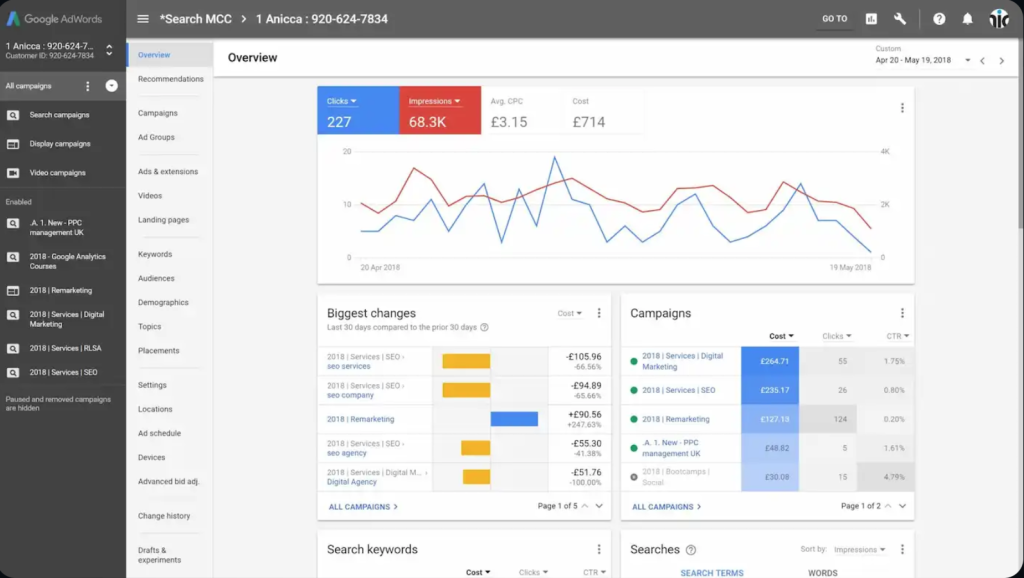
It would be a good idea to consider these elements:
Headlines – What headlines are gaining traction? Do certain formats like questions or urgency phrases perform better? What tone and messaging stand out?
Descriptions – How do competitors incorporate unique value propositions, benefits statements, and calls to action within tight character limits? What formatting approaches work best?
Image Usage – Do competitors use images or video thumbnails to increase visibility? What types of images elicit more clicks? How are products displayed visually?
Ad Extensions – Are call, location, affiliate location, callout, structured snippet, message, price, app, or other digital marketing extensions being leveraged to enhance real estate?
Calls-to-Action – Which specific verbs and action phrases compel users to click? How prominently are CTAs placed?
You gain concrete ideas to test in your accounts for higher click-through and conversion rates. Analysing what messaging stops your audience in their tracks arms you with the insight needed to craft compelling ads.
Keyword Strategy
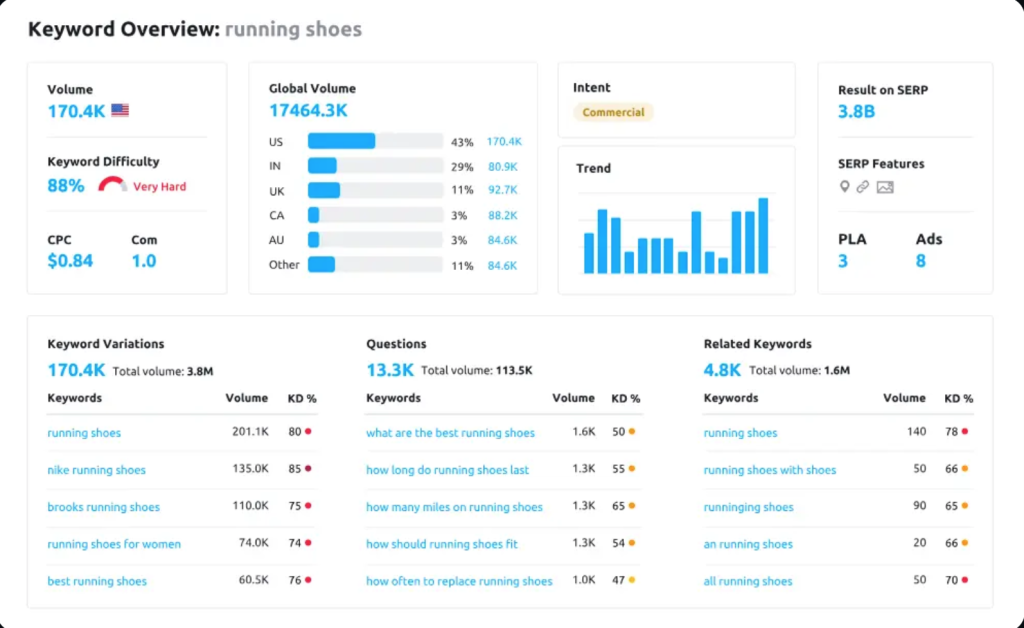
A competitor’s keyword strategy reveals valuable insights about how they attract searchers and guide them to conversions. The right software shows which terms competitors are bidding on and how those same keywords are performing. Metrics like:
Impressions – What search terms are driving the most traffic to competitors? Where in search volume are they gaining significant visibility?
Clicks – Beyond impressions, which keywords compel searchers to click through to sites?
Click-through rate (CTR) – What messaging and term combinations lead to the highest engagement levels? Which might present untapped potential?
Average cost-per-click (CPC) – On which phrases are competitors investing most heaviest to buy clicks? Which terms deliver clicks efficiently?
Conversion rate – Ultimately keywords need to drive business results – so which relevant keywords produce the best conversion rates for competitors?
Analysing keyword strategies allows you to model high-performing choices while also identifying potential gaps to fill where competitors may be missing opportunities. You gain perspective on:
- Valuable long-tail variations that attract qualified traffic
- Do better than mere segmentation around demographics, locations, devices, etc.
- Immediate adoption and implementation of hyper-personalisation of communication
- Optimisation possibilities for overlapping keyword targets
- Ways to refine relevancy with positive/negative approaches
Making informed decisions based on hard competitor data is crucial for excelling in the paid search auction. Evaluating keyword strategies guides more precise targeting, higher quality traffic, and better conversions.
Landing Pages
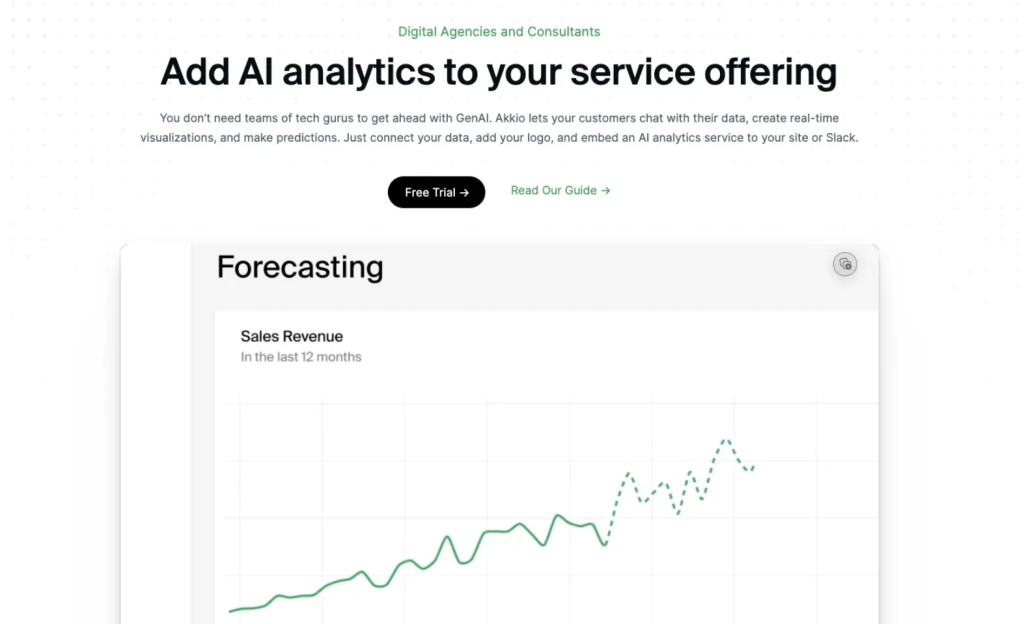
Your ad is only as strong as the landing page experience it drives traffic towards. Analysing how competitors optimise and align their ad campaigns with post-click pages provides excellent UX and conversion benchmarking.
Compare:
Page Load Speed – Which pages load fastest from click to conversion? How are competitors optimising page weight, CDN usage and other speed factors?
Layout – What layouts communicate value propositions? How prominently are USPs displayed? Where are key content areas positioned?
Content Relevance – Does the landing page echo the messaging of the keyword and ad copy? Are competitive differences and unique selling points reinforced?
Calls-to-Action – How many CTAs are on each page? Where are they positioned? Do they use contrast, colour or bolding to stand out? What formatting works best?
You gain concrete ideas for creating seamless user journeys primed for converting ad clicks into customers. Every landing page component should build transparency while urgently guiding visitors to convert.
Additional factors like security, mobile optimisation, breadcrumbs, etc. also impact the post-click experience. By holistically evaluating UX and conversion paths – you uncover site enhancement possibilities to lift PPC value. Ultimately competitors reveal what funnel optimization strategies users respond best to.
Additional Analysis Areas
Along with the core analysis pillars above, there are additional areas that provide helpful competitive intelligence based on your niche, target audience and business model:
Remarketing Strategies
Understanding competitors’ approaches to individualisation and hyper-personalisation helps inform your retention and repeat customer strategy. Monitor their:
- New consumer capture building
- Existing consumer data building
- Ad sequencing
- Retargeting ad copy/messaging
- Sitewide tagging for custom audience building
By learning from their wins and losses, you refine your marketing strategy and your remarketing roadmap.
Ad Positions
Tools like Google Ads’ Auction Insights allow you to monitor competitors’ ad positions in search engines and results related to your shared keywords. Track:
- Which ads appear most frequently
- Typical ad positions
- Auction competitiveness
To gauge how your budget and bids stack up.
Budget Fluctuations
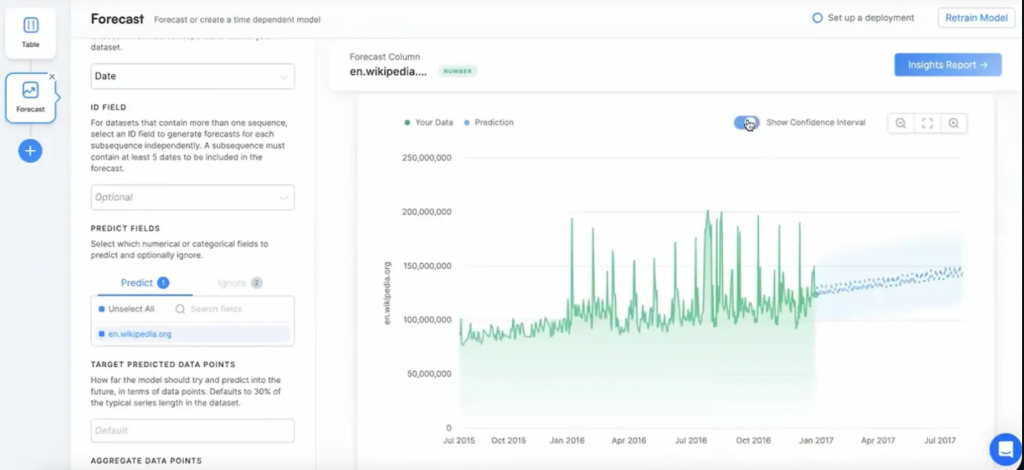
Tools provide estimates of competitors’ historical and current paid advertising and search budgets. Monitoring large budget changes over time can indicate shifts in business priorities and new campaign testing. Tools can be used to forecast future changes given historical data, as shown in the following figure.
Conversion Tracking
Assess how competitors track ROI by monitoring which conversion events they tag on their website using Facebook Pixel Helper and other tools. Their conversion strategy provides ideas for optimising your tracking to connect ad spend to bottom-line growth.
Now that we’ve covered the key elements to analyse, let’s walk through the process of executing a competitor analysis.
How to Create a PPC Competitor Analysis Process
Conducting a structured PPC competitor analysis follows a clear path—here are the steps:
Step 1: Identify Main Competitors
First, pinpoint the 5-7 paid search advertisers you consider your closest competitors. Tools like SEMrush, Ahrefs and SpyFu compile lists of companies bidding on your target keywords.
Priorities ones with:
- Significant impression/click volume
- High-quality scores
- Relevant landing pages
And also assesses secondary competitors with distinct budget advantages to provide aspirational intelligence.
Step 2: Uncover Keywords
Discover each competitor’s most valuable keywords—both shared and unique ones you’re missing—using SEMrush’s Keyword Gap tool or Ahrefs’ Site Explorer.
Analyze keyword metrics like:
- Volume
- CTR
- Competition
- Conversion potential
To identify new terms worth targeting and current terms requiring new strategies to compete.
Step 3: Evaluate the Ad Copy
Leverage tools like SEMrush’s PPC Keyword Tool or SpyFu to compile each competitor’s recent text ads.
Assess the:
- Headline techniques
- Messaging themes
- CTAs and offers
- Ad extensions used
Conducting tests on various ad copy elements in your accounts can reveal shared characteristics of top-performing ads.
Step 4: Analyse Landing Pages
Check out competitors’ landing pages using tools like SEMrush.
Compare elements like:
- Page load speeds using GTMetrix
- Layout and content flow
- Mobile optimisation
- Form placement
To generate ideas for better post-click experiences, helping convert more traffic.
Step 5: Track Changes Over Time
The market evolves fast. Set up monitoring with paid tools like TAMZ, IntelligenceNode and SEMrush to receive alerts when competitors make major changes like:
- Launching first-time ads
- Adding new keywords/ad copy
- Changing landing page layouts
- Shifting cross-channel budgets
Ongoing tracking ensures you respond quickly rather than playing catch up.
Now that we’ve covered the analysis process, let’s explore the top tools to support competitor research.
Must-Have PPC Competitor Analysis Tools
Conducting thorough competitor analysis requires leveraging robust tools that compile data and provide actionable insights. Here are the top services:
Akkio
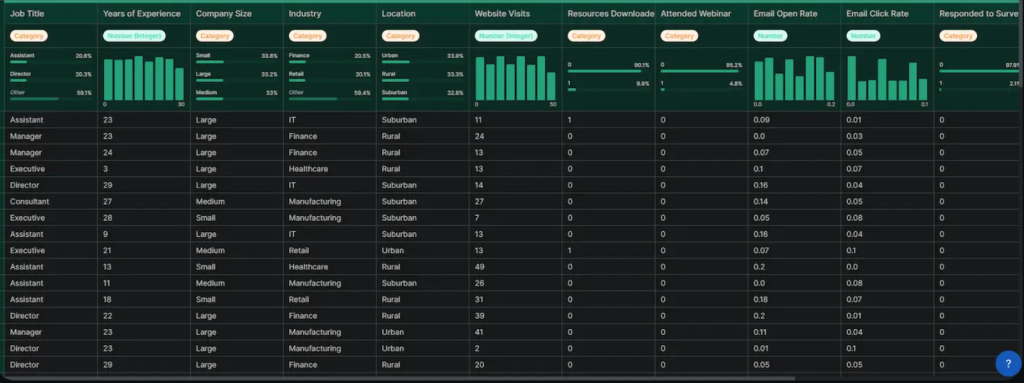
Akkio is the easiest way for agencies, consultants, and solution providers to add AI to their service offerings. Our generative business intelligence platform gives you a market advantage, so you can win competitive business and demonstrate greater value to clients.
Akkio helps agencies with PPC competitor analysis:
- Import data from SEMRush and quickly uncover insights with AI-powered chat features. Akkio can generate graphs for you in minutes;
- Analyze huge datasets to find key drivers of business success for your competitors. Which PPC campaigns do they invest most in? Are they spending the most on Google Ads or other platforms? Find out by simply asking our AI models;
- White label the reports and dashboards. Let your clients interact with data in a branded environment.
SEMrush
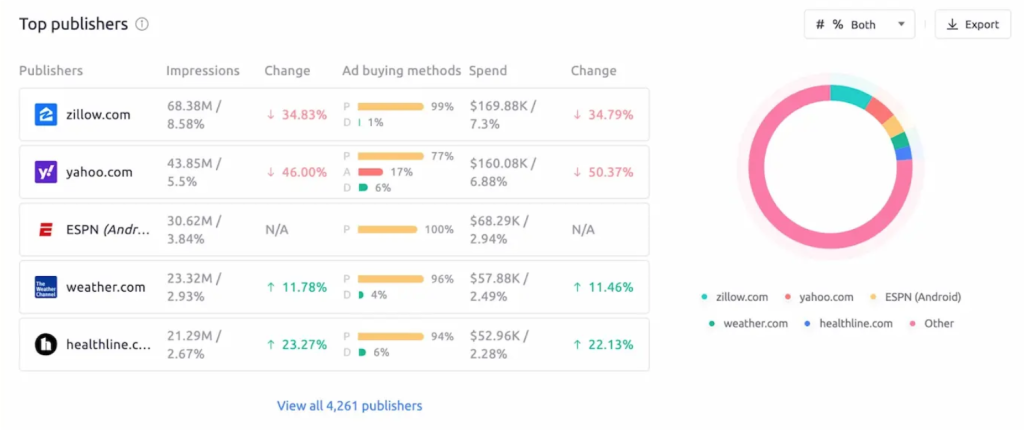
SEMrush provides a wealth of data on competitors’ PPC campaigns, including keywords, ad copy, budgets, and more.
This allows for easy benchmarking and identification of new opportunities. The data can be overwhelming and difficult to parse.
While SEMRush requires a great deal of time to master, it’s also one of the only 360 marketing platforms to build digital marketing plans, check on competitors’ ad strategies, and figure out where their marketing budget is going. With in-depth data on keyword research, paid keywords, and PPC competition for each domain, you’re sure to find a wealth of data to inform campaigns here.
Ahrefs
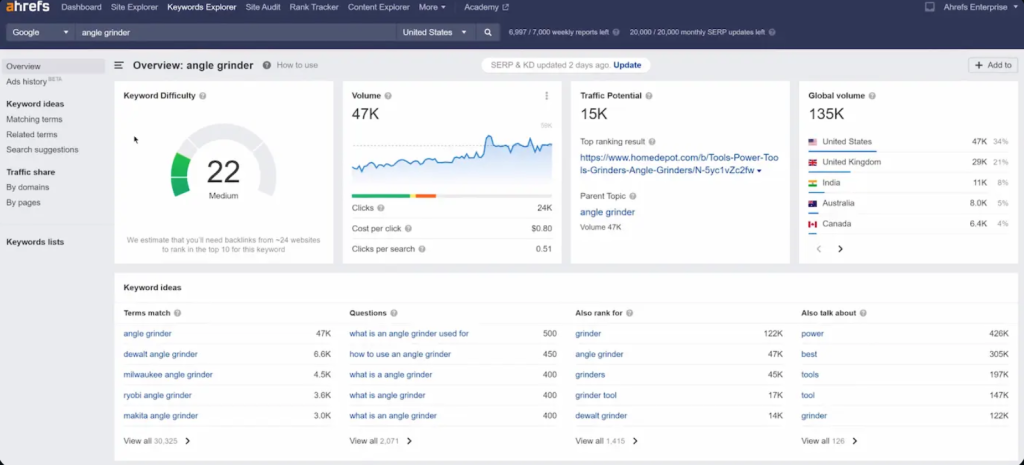
Ahrefs provides detailed PPC data on competitors’ ads, keywords, and display campaigns. This allows the identification of lucrative opportunities to outbid competitors.
Ahrefs is a leading SEO big data provider, with petabytes of data in their Singapore datacenter. They launched their first tools for PPC marketing a few years ago, and keep improving daily.
SpyFu
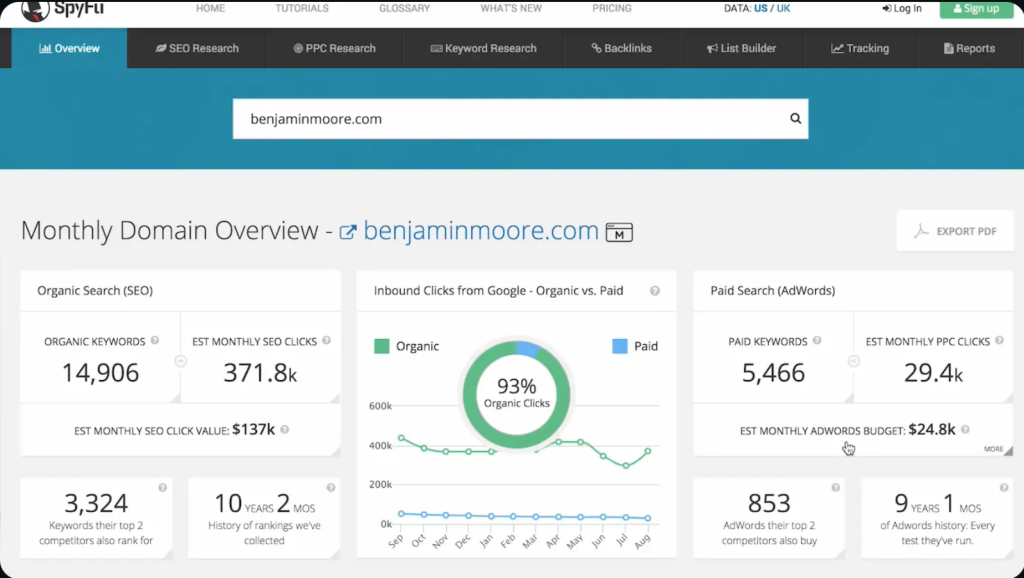
SpyFu provides detailed insights into competitors’ PPC campaigns, allowing you to see their ads, keywords, and spending levels.
This helps you identify opportunities to outbid competitors on valuable keywords and potentially reach more targeted searchers. It’s also fairly affordable and includes unlimited searches even on the cheaper plans.
Google Ads’ Auction Insights
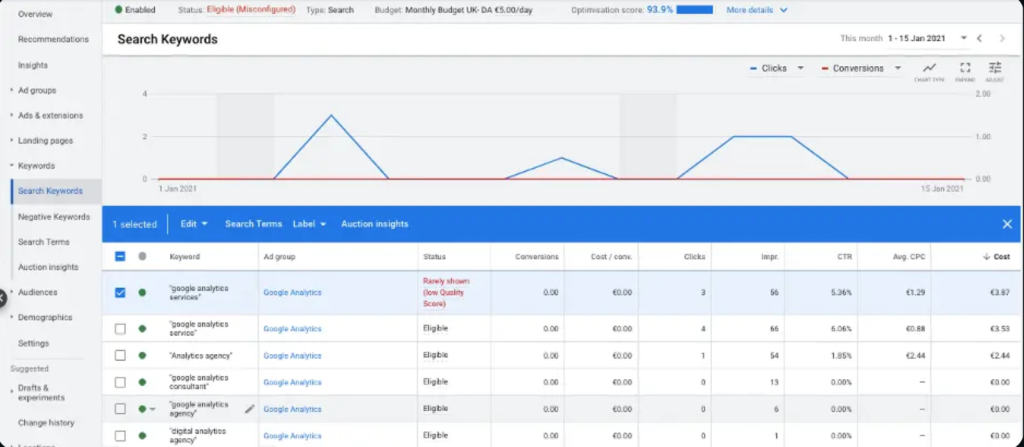
Google Ads’ Auction Insights provides useful visibility into PPC competitors’ actual bids and impressions on shared keywords. This helps reveal the minimum bids necessary to capture more traffic and informs budget planning.
Auction Insights only includes data on competitors who also use Google Ads, meaning campaigns on Microsoft Ads or other networks are not shown. Specific ads and landing pages behind competitors’ bids are anonymous, limiting full campaign visibility.
While the actual bid insights from shared auctions are valuable, over-reliance on Auction Insights runs the risk of blindspots regarding competitors’ broader non-Google activity and creative messaging.
Facebook Ad Library
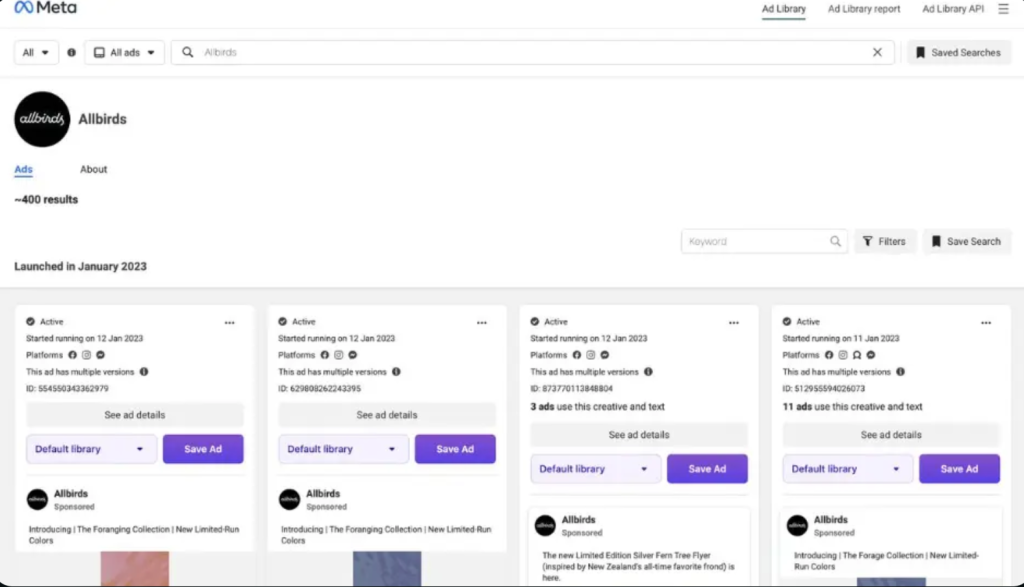
Facebook Ad Library enables viewing PPC competitors’ actual Facebook ads, providing insights into their creative strategies and messaging. This helps reveal what resonates with target audiences, informing improved ad differentiation.
Facebook Ad Library shows ads running on Facebook itself, lacking visibility into competitors’ ads on other platforms. Metrics like budgets, bids, impressions, and targeting are anonymous, limiting full campaign transparency.
LinkedIn Ads Library
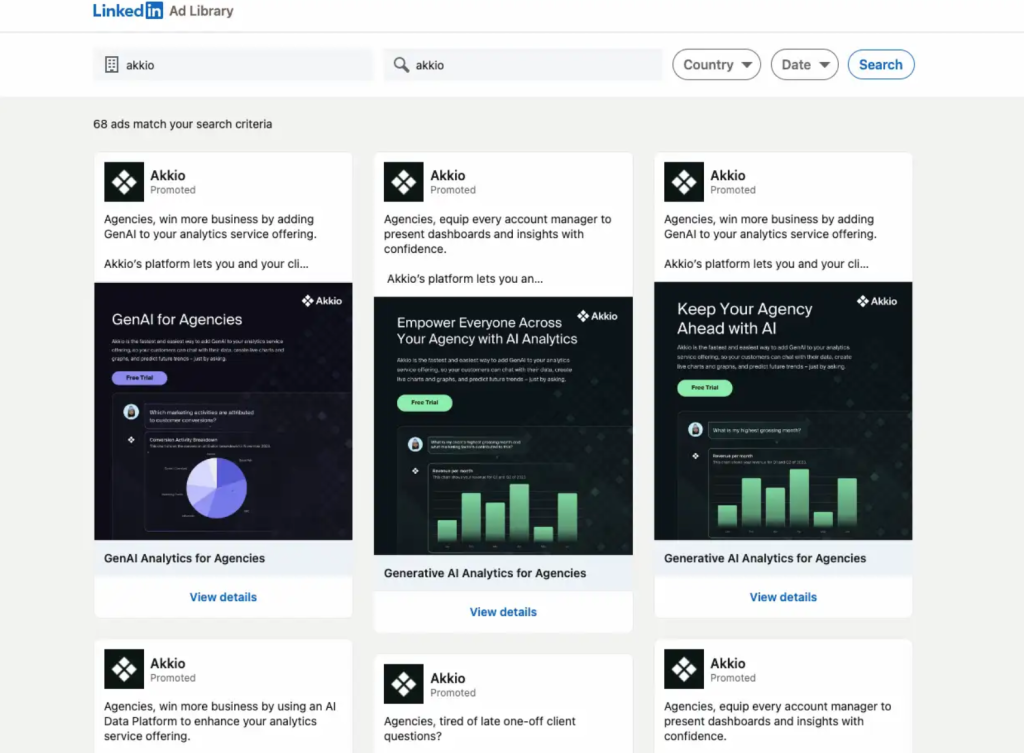
LinkedIn Ad Library offers visibility into competitors’ LinkedIn ads, revealing their creative strategies and messaging. This feature is essential for understanding what resonates with LinkedIn’s audience, aiding in the development of more distinct advertising approaches.
While it discloses ad details like targeting and impressions for ads, certain metrics such as precise budgets and bids remain undisclosed, thus limiting a complete view of competitors’ campaign strategies
Conclusion
By thoroughly analysing competitors’ paid search approaches, companies gain an essential competitive edge guiding their own PPC success.
The key takeaways include:
- Knowledge is power. PPC competitor analysis provides concrete strategic insights you would never uncover otherwise across keywords, messaging, landing pages and more.
- Beat competitors by learning from them. Use their wins as inspiration by implementing proven tactics in your accounts while capitalising on their weaknesses.
- Go granular. Don’t just look at obvious big-picture elements; niche optimization opportunities often lie in subtle details like specific ad copy phrasing and remarketing audience building.
- Stay agile. With the market evolving at light speed, set up monitoring to respond quickly rather than playing catch up to competitors’ tests and launches.
Ultimately, with the steps covered today for executing structured competitor analysis using robust tools, you gain an essential competitive weapon to push your PPC performance ahead of rivals in your space. With the right competitor insights guiding marketing efforts, budget allocation, keyword expansion and creative testing, your cost-per-conversion drops as your conversions and revenue climb.
